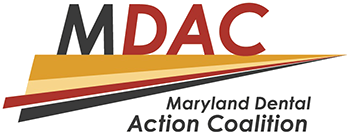Key Talking Points
Brevity is key when writing talking points for an advocacy visit. As you structure your talking points, highlight imperative details such as your specific ask, the current state of the issue and its impact on constituents, and the implication of your specific ask. The FrameWorks Institute developed a key talking points template that frames issues around oral health policy.
Legislative Testimonies
Legislating is a reactive process. Your testimony can influence the progression of legislation by raising awareness of an issue, providing insight from the grass roots, or sharing real-life stories. Testimonies, usually submitted prior to a visit, are brief, jargon-free, and straightforward. This section includes tips and resources to help you frame your story, write your legislator, and prepare you to give your testimony.
Tips:
- Define and frame the problem, and propose viable solutions that answer “what,” “why,” “where,” and “how” questions.
- Be specific about your asks.
- Focus on what you know.
- Expound main points from your written statement with additional data and details when speaking with legislators or staffers.
- Identify likely questions beforehand; practice saying “I don’t know, but I will get back to you”
- Be polite, be calm, and stay on topic.
Resources:
- Frameworks template for legislative testimony
- Families USA Storybank Toolkit
- Frameworks Storytelling for Social Change
Letters to the Editor
Letters to the editor in response to policy changes are an effective advocacy strategy. They help focus attention on the issue, disseminate information on unfamiliar issues with a broader audience, and potentially spark action. In this section, you will find tips and a sample template to assist you in spreading your message.
Tips:
- Highlight your credentials or expertise on the issue.
- Show the impact of the policy at the local level.
- Include personal stories.
- Support your point with data and facts.
- End with a call to action and your signature.
Resources:
- Frameworks Letter-to-the-Editor Toolkit
Position Statements
You can support your community by sharing your stance on issues and matters through a position statement. Position statements explain your views about policy changes or an issue, and offer proposed solutions. Through a position statement, your organization can develop a broader understanding of the issue, build support, and share recommendations. In this section, we include tips and an outline to help you prepare a position statement.
Tips:
- Assess if a position paper is necessary. Consider the severity of and controversy around the issue, its current impact/state in the field, available data, and evidence that supports your position and the current level of support around the issue.
- Determine the intended audience, including their interests and position.
- Align your position with your organization’s mission and values.
- Reference credible sources to support your stance.
General Outline:
- Introduction
- Description of issue
- Background of issue
- Position
- Position on issue
- 2-3 points on that clearly convey your stance, the decision to take this stance, and facts/data supporting your stance
- Recommendations
- 1-2 proposed solutions regarding the issue
- Conclusion
- Reinforce position and support briefly
